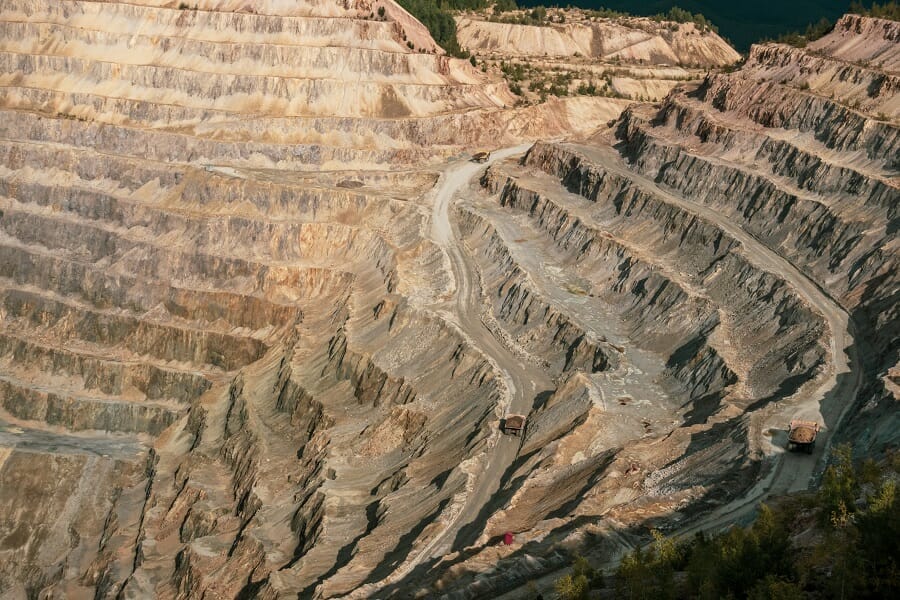New mining projects, usually situated in remote regions, need infrastructure to move commodities from mines to ports to sell to export markets. This “pit to port” infrastructure tends to be the most expensive part of the ancillary infrastructure such as power and water treatment plants, airports, mining camps, and roads, that a project needs.
Debt finance for international mining projects
Debt is crucial for pit to port projects, and as appetite for risk has diminished since the financial crisis, banks have contributed less to the project cost, hence placing the refinancing risk on the project sponsor. Debt may take the form of loans gotten from domestic and international debt markets, secondary finance from parties aiming to secure offtake, or by issuing bonds on a stock exchange.
Project sponsors also need equity financing. This could take the form of private investment into the project, sovereign wealth funds, equity from important contractors, or from export credit agencies.
So, in order to secure finance, project sponsors must show that project risks are reasonable. Bankers who have distinct risk appetites will consider the risks against the forthcoming return. The required return will differ greatly between projects and financiers.
Understanding the risk factors to finance mining projects
A few of the key risks and considerations of financiers in evaluating pit-to-port projects are outlined below:
- Debt to equity: Financiers will require a specific level of equity to be injected into the project before lending.
- Country: A financier’s readiness to provide financing will rely on the jurisdiction in which the project is integrated. For example, some arising jurisdictions have abounding resources which remain mostly untapped due, in particular, to a shortage of infrastructure and a challenging business environment.
- Insurance: Financiers will require thorough insurance for any project, for instance, third-party liability, construction risk, and delay in start-up. In certain jurisdictions, insurance must be taken out with local insurance providers. Sometimes financiers will not be comfortable depending only on such insurance if the local insurer is not well stabilized and creditworthy and may hence require reinsurance. In some jurisdictions, an assignment of reinsurance is not lawful as the law does not permit the local insurance company to give security over its rights.
- Infrastructure: Mines’ productive activities are usually underway in remote areas, which requires host countries to procure more civil infrastructure, particularly in transportation and energy supply because these components can ensure the mines projects to go on smoothly to some level. But investors are very uncomfortable with the local social environment and transport costs in spite of other endeavors. Many mines are far away from coastal terminals and railway construction is under inadequate conditions so that in peak season local mine owners fight hard for railway transportation, which brings negative effects for every investor.
- PRI (political risk insurance) insurance: In specific less politically-stable jurisdictions, financiers discern that they face enormous risks of currency inconvertibility, seizure of assets, and political violence such as war or additional actions of revolutionaries. For such reasons, financiers might require the borrower to pay for them to have the advantage of political risk insurance (PRI).
PRI can be acquired from private sources, as well as from public or governmental sources. The lawyers’ job will be to intervene and settle the definitions of e.g. war, embargo, and currency incompatibility, as well as to guarantee that the policy is adapted to the specific loan agreement and the ‘pay out’ events are co-terminus with the events of default under the loan agreement. Policy issuers occasionally wish to become involved in the negotiation of loan documentation which can become a particular problem where certain banks elect to take PRI and others do not.
- Title risk: The nature of the privilege of the mining company to develop the deposit forming the basis of the project will be at the forefront of financiers’ proper diligence. Often, ownership is vested in the central government and the mining company will only be able to procure a license to mine the minerals in question. Financiers will perform due diligence to guarantee that such license was validly and effectively approved of and in what circumstances it can be invalidated. In numerous countries, the central government will retain a free-carried interest in the project or impose royalty payments.
- Sovereign risk: Financiers regularly assess the sovereign risks of a project. These constitute changes in law or government, the risk of law, resource or infrastructure nationalism, and in some instances, war. Governments might require tax or seek increases in royalty, restrict foreign ownership, and impose outrageous environmental and employment obligations. In cross-border projects, inter-governmental alliances and revenue-sharing arrangements are evaluated.
- Taking security: Financiers will want to take security over several project assets. Security documentation is practically always governed by the laws of the jurisdiction where the applicable asset is located. Taking security can be more confounded in certain jurisdictions, and in some jurisdictions, it will not be feasible to take security over future assets or to take a floating charge. This will be a burden for the financier and may need the borrower to offer up other solutions.
- Enforcement: Enforcement of security are more complicated in some jurisdictions than others, and this will be a component for financiers when determining whether to finance in such jurisdictions and in structuring ways around this. The formal common law analysis assumes that a secured party will have a self-help solution allowing it to sell the secured asset of its own choice without the need to involve a third party. But in many arising markets this is not possible.
Project bankers need to carefully assess the importance of separate financings and where there is separate financing, comprehend the difficulties of ensuring the supply chain operates as a whole.
To dive deeper into the mining industry and know what to look for when it comes to mining financing, let’s go ahead together and contact your Damalion expert now.

